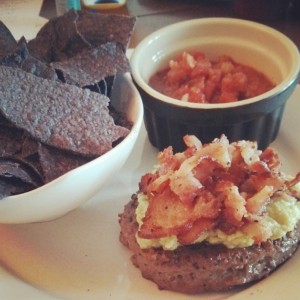
The first time I bit into a slice of gluten-free bread I nearly choked – not only because it tasted horrible, but because I’d paid nearly $8.00 for what may as well have been a loaf of cement.
While I eventually found a better-tasting brand, I’ve never managed to find gluten-free foods that don’t come at an extra cost. I don’t eat dairy or nuts, either, so that further complicates things.
As I saw my bank account start to wither every time I went grocery shopping, I began to wonder about the real financial impact of my diet. I was desperate to know exactly how much money I was losing by choosing my health over my wallet.
I went to my local grocery store, Hartman’s Independent on Bank St., and compared the cost of foods I used to eat with their gluten-free, dairy-free, nut-free alternatives I now buy. Where possible, I directly compared products from the same brand. I compared alternatives with their most similar regular counterparts based on product weight and likeness – whole grain bread with gluten-free whole grain bread, for example. If products were on sale, I compared them based on their regular price.
Overall, my alternative products were more expensive and yielded less food for my money (see sidebar).
But does it have to be this way? Or are these prices artificially inflated because companies know we’ll pay?
Peter de Hoog, an holistic nutritionist and owner of Finally Gluten Free Foods, said unfortunately gluten-free costs more. There tends to be more ingredients involved than in regular cooking. For example, to make cookies made with all-purpose flour gluten-free, as many as six different flours, like tapioca, rice or buckwheat flour may be needed. The costs add up quickly. Ingredients for the bread de Hoog sells cost roughly $3.50 per loaf. That doesn’t factor in other overhead costs, like time to produce, rent or utilities. A loaf sells for about $7.00 after all is said and done.
Due to the high cost of alternative ingredients, de Hoog estimates the cost of these foods to be 30-40% higher.
It’s a harsh reality to face, especially when eating mainstream products just isn’t an option.
But there are ways to reduce the cost of eating alternative foods.
“I think one of the mistakes people make is they think they have to come and get some really fancy brand that’s gluten-free,” said Krista Browne, the buyer for local alternative grocer Herb and Spice. “Instead they can just go ahead and make the same product they’re looking for themselves by just buying individual ingredients.”
De Hoog noted that when people pursue alternative diets with the goal of improving health, rather than following a trend, they often stop eating the products that are the most expensive to replace. It’s also more difficult to eat at restaurants. The combination of these factors, said de Hoog, is that costs probably come close to balancing out.
“You might spend a little less because you’re not buying processed, packaged, marketed, labelled junk,” said de Hoog. “If you’re doing gluten-free and replacing Oreos with gluten-free alternatives, yeah, it is more expensive. There are a lot of less expensive ways of accommodating healthy eating.”
Browne added that doing a lot of research and being prepared when you go grocery shopping is the best way to get more out of your money.
Ultimately, though, de Hoog said it comes around to deciding to invest in your health.
To me, at least, my health is priceless.
